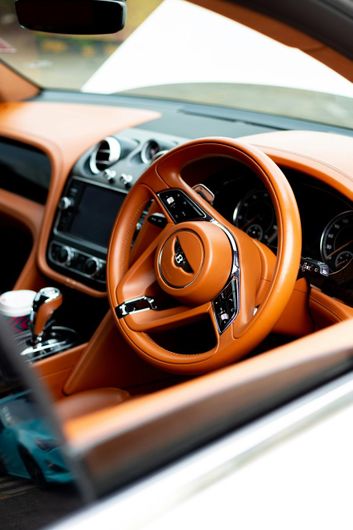Luxury Car Tax: What’s the latest?
- The Federal Government is reportedly considering phasing out the Luxury Car Tax (LCT) as part of its negotiations for a free trade agreement with the European Union.
- Rather than eliminating the tax immediately, the government is exploring a gradual reduction to protect vehicle resale values and maintain market stability.
- LCT currently applies a 33% tax on the value of vehicles above certain thresholds – $80,567 for most cars and $91,387 for fuel-efficient models.
- Approximately 40% of the $1.2 billion annual LCT revenue is generated from European vehicle sales, as reported by The Australian.
What is the Luxury Car Tax (LCT)?
The Luxury Car Tax (LCT) is a 33% tax applied to the portion of a car’s price that exceeds a set threshold, targeting higher-end vehicles. It applies to both new and near-new cars under two years old, as well as older vehicles that were imported into Australia less than two years ago.
Here’s how LCT works:
- Thresholds are set by the Australian Taxation Office (ATO), which are currently $91,387 for fuel-efficient vehicles (3.5L per 100km or less) and $80,567 for other vehicles.
- The tax rate is 33% and is charged only on the portion of the car’s value above the LCT threshold.
- LCT is usually included in the car’s drive-away price and collected by the dealer or importer.
- Not all vehicles are subject to LCT, such as those designed to carry more than two tonnes or nine passengers.
LCT isn’t the same as stamp duty, which is calculated individually by each state. Instead, the ATO sets the LCT threshold for different vehicle types each financial year to determine how much extra you’ll have to pay on your car.
LCT thresholds in Australia
Financial year | 2025-26 |
|---|---|
Fuel-efficient vehicles | $91,387 |
Other vehicles | $80,567 |
Financial year | 2024-25 |
Fuel-efficient vehicles | $91,387 |
Other vehicles | $80,567 |
Financial year | 2023-24 |
Fuel-efficient vehicles | $89,332 |
Other vehicles | $76,950 |
Financial year | 2022-23 |
Fuel-efficient vehicles | $84,916 |
Other vehicles | $71,849 |
Financial year | 2021–22 |
Fuel-efficient vehicles | $79,659 |
Other vehicles | $69,152 |
Financial year | 2020–21 |
Fuel-efficient vehicles | $77,565 |
Other vehicles | $68,740 |
Financial year | 2019–20 |
Fuel-efficient vehicles | $75,526 |
Other vehicles | $67,525 |
Financial year | 2018–19 |
Fuel-efficient vehicles | $75,526 |
Other vehicles | $66,331 |
Financial year | 2017–18 |
Fuel-efficient vehicles | $75,526 |
Other vehicles | $65,094 |
Financial year | 2016–17 |
Fuel-efficient vehicles | $75,526 |
Other vehicles | $64,132 |
Financial year | 2015–16 |
Fuel-efficient vehicles | $75,375 |
Other vehicles | $63,184 |
Financial year | 2014–15 |
Fuel-efficient vehicles | $75,375 |
Other vehicles | $61,884 |
Financial year | 2013–14 |
Fuel-efficient vehicles | $75,375 |
Other vehicles | $60,316 |
Financial year | 2012–13 |
Fuel-efficient vehicles | $75,375 |
Other vehicles | $59,133 |
Financial year | 2011–12 |
Fuel-efficient vehicles | $75,375 |
Other vehicles | $57,466 |
| Financial year | Fuel-efficient vehicles | Other vehicles |
|---|---|---|
2025-26 | $91,387 | $80,567 |
2024-25 | $91,387 | $80,567 |
2023-24 | $89,332 | $76,950 |
2022-23 | $84,916 | $71,849 |
2021–22 | $79,659 | $69,152 |
2020–21 | $77,565 | $68,740 |
2019–20 | $75,526 | $67,525 |
2018–19 | $75,526 | $66,331 |
2017–18 | $75,526 | $65,094 |
2016–17 | $75,526 | $64,132 |
2015–16 | $75,375 | $63,184 |
2014–15 | $75,375 | $61,884 |
2013–14 | $75,375 | $60,316 |
2012–13 | $75,375 | $59,133 |
2011–12 | $75,375 | $57,466 |
Why is there a tax on luxury cars?
The Luxury Car Tax was introduced in Australia in 2000 to support the local car manufacturing industry by making imported luxury vehicles more expensive. But since local manufacturing ended in 2017, many now question whether the tax is still necessary.
The Albanese government has proposed phasing out the LCT as part of a free trade deal with the European Union. The goal is to improve trade opportunities – particularly for Australian agriculture – and modernise outdated tax policies.
If the tax is removed, buyers could see noticeable savings on premium and European cars, with prices potentially dropping by thousands of dollars. Supporters say this would make luxury vehicles more affordable, while critics argue the change mainly benefits wealthier Australians and won’t help everyday buyers.
We spoke to Jordan Mulach at Torquecafe.com to get his thoughts on whether LCT has outstayed its welcome.

Jordan Mulach, Motoring Editor at Torquecafe.com
“Personally, I see the repeal of LCT as a positive for consumers, not only because there is no longer a local manufacturing industry to protect, but its implementation – such as being applied to options as well as the base price of a vehicle – has been far from perfect. I don't think it will have major impacts on the resale value of most cars, as a majority of the vehicles impacted by the LCT would either 1) be only slightly over and not incur that much extra tax, 2) already suffer significant depreciation or 3) be high-value, sought-after vehicles which turn up for sale above the RRP anyway.”
Jordan Mulach, Motoring Editor at Torquecafe.com
How to calculate your LCT
Here’s how you can calculate your LCT:
Start with the car’s purchase price
Begin with the total purchase price of the vehicle, including GST. Don’t include extras like stamp duty, registration or car insurance.
Subtract the LCT threshold
Deduct the relevant LCT threshold from the purchase price to find the taxable portion. Example: $90,000 - $80,567 = $9,433.
Remove the GST component
To calculate the GST-exclusive portion, divide the result by 1.1. Example: $9,433 ÷ 1.1 = $8,575.
Calculate the LCT Payable
Multiply the GST-exclusive amount by 33% to determine the Luxury Car Tax owed. Example: $8,575 x 0.33 = $2,830.
For a $90,000 vehicle that isn’t classified as fuel-efficient, the Luxury Car Tax would be approximately $2,830. If that amount were financed along with the rest of the vehicle cost using a car loan, the borrower would also pay an extra $612 in interest over the life of the loan, assuming a five-year term and an interest rate of 8.00% p.a.
LCT applied to popular cars in Australia
Here are some popular car manufacturers and models in Australia where LCT may apply.
Vehicle | Ford Ranger - Raptor 3.0 (4x4) |
|---|---|
Car purchase price (excluding on-road costs) | $90,440 |
LCT threshold | $80,567 |
Approximate LCT cost | $2,962 |
Vehicle | Nissan Patrol - Warrior (4x4) |
Car purchase price (excluding on-road costs) | $105,660 |
LCT threshold | $80,567 |
Approximate LCT cost | $7,528 |
Vehicle | Volvo EX90 |
Car purchase price (excluding on-road costs) | $124,990 |
LCT threshold | $91,387 |
Approximate LCT cost | $10,081 |
Vehicle | Volkswagen Touareg - R Ehybrid (phev) |
Car purchase price (excluding on-road costs) | $129,990 |
LCT threshold | $91,387 |
Approximate LCT cost | $11,581 |
Vehicle | Toyota LandCruiser - LC300 Sahara ZX (4x4) |
Car purchase price (excluding on-road costs) | $145,791 |
LCT threshold | $80,567 |
Approximate LCT cost | $19,567 |
Vehicle | Mercedes-Benz GLE-Class - 450 D 4Matic |
Car purchase price (excluding on-road costs) | $154,900 |
LCT threshold | $80,567 |
Approximate LCT cost | $22,300 |
Vehicle | Audi SQ7 - TFSI quattro |
Car purchase price (excluding on-road costs) | $174,815 |
LCT threshold | $80,567 |
Approximate LCT cost | $28,274 |
| Vehicle | Car purchase price (excluding on-road costs) | LCT threshold | Approximate LCT cost |
|---|---|---|---|
Ford Ranger - Raptor 3.0 (4x4) | $90,440 | $80,567 | $2,962 |
Nissan Patrol - Warrior (4x4) | $105,660 | $80,567 | $7,528 |
Volvo EX90 | $124,990 | $91,387 | $10,081 |
Volkswagen Touareg - R Ehybrid (phev) | $129,990 | $91,387 | $11,581 |
Toyota LandCruiser - LC300 Sahara ZX (4x4) | $145,791 | $80,567 | $19,567 |
Mercedes-Benz GLE-Class - 450 D 4Matic | $154,900 | $80,567 | $22,300 |
Audi SQ7 - TFSI quattro | $174,815 | $80,567 | $28,274 |
When and how do you pay LCT?
LCT is typically included in the advertised or quoted price when buying a vehicle from a dealership. In most cases, you won't need to calculate or pay it separately – the dealer is responsible for paying the LCT directly to the ATO as part of the sale process.
If you’re importing a luxury vehicle privately, you may need to pay LCT yourself if the car’s value (including GST and customs duty) exceeds the applicable threshold. This payment is usually made through the Department of Home Affairs during the import process.
Refunds or exemptions may be available in certain situations – for example, if you’re an eligible primary producer, tourism operator, or if the car meets specific criteria for exemption. These are typically processed by lodging a claim with the ATO, either as an individual or a business.
How can you save on LCT?
There are several ways to reduce or avoid paying LCT, depending on your situation and the type of vehicle you purchase:
- Claiming an LCT Refund: Certain eligible buyers, such as primary producers and tourism operators, may be entitled to claim a refund on part of their LCT – up to $3,000. To access this benefit, you’ll need to apply through the ATO and meet specific eligibility criteria.
- Choose a fuel-efficient vehicle: Fuel-efficient vehicles benefit from a higher LCT threshold compared to non-fuel-efficient cars. This means you can purchase a more expensive fuel-efficient car before LCT applies, potentially saving you thousands. According to the ATO, a fuel-efficient vehicle is defined as one that uses no more than 3.5 litres of fuel per 100 kilometres.
- Look for LCT exemptions: Not all vehicles are subject to LCT. Vehicles that are not classified as passenger cars, or specially modified vehicles designed for specific purposes – such as transporting wheelchair users – may be exempt from paying LCT altogether.


